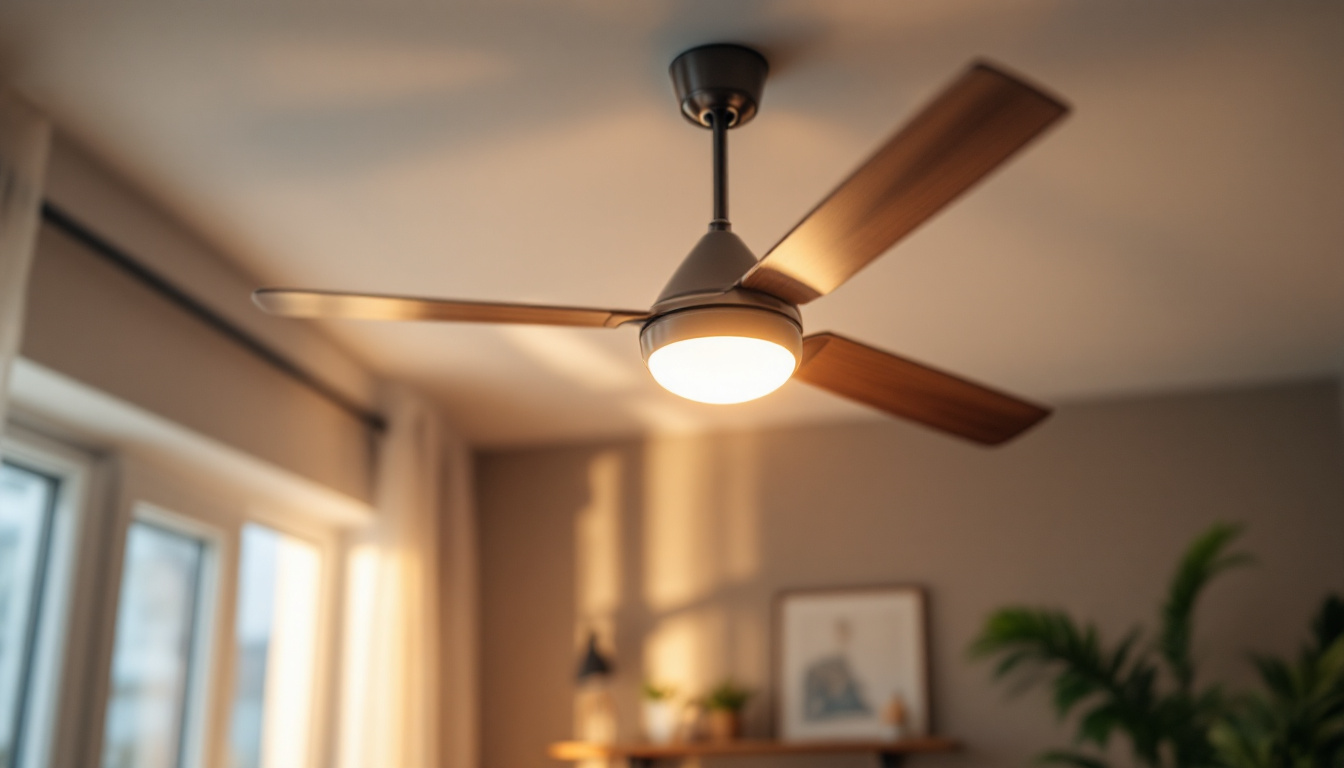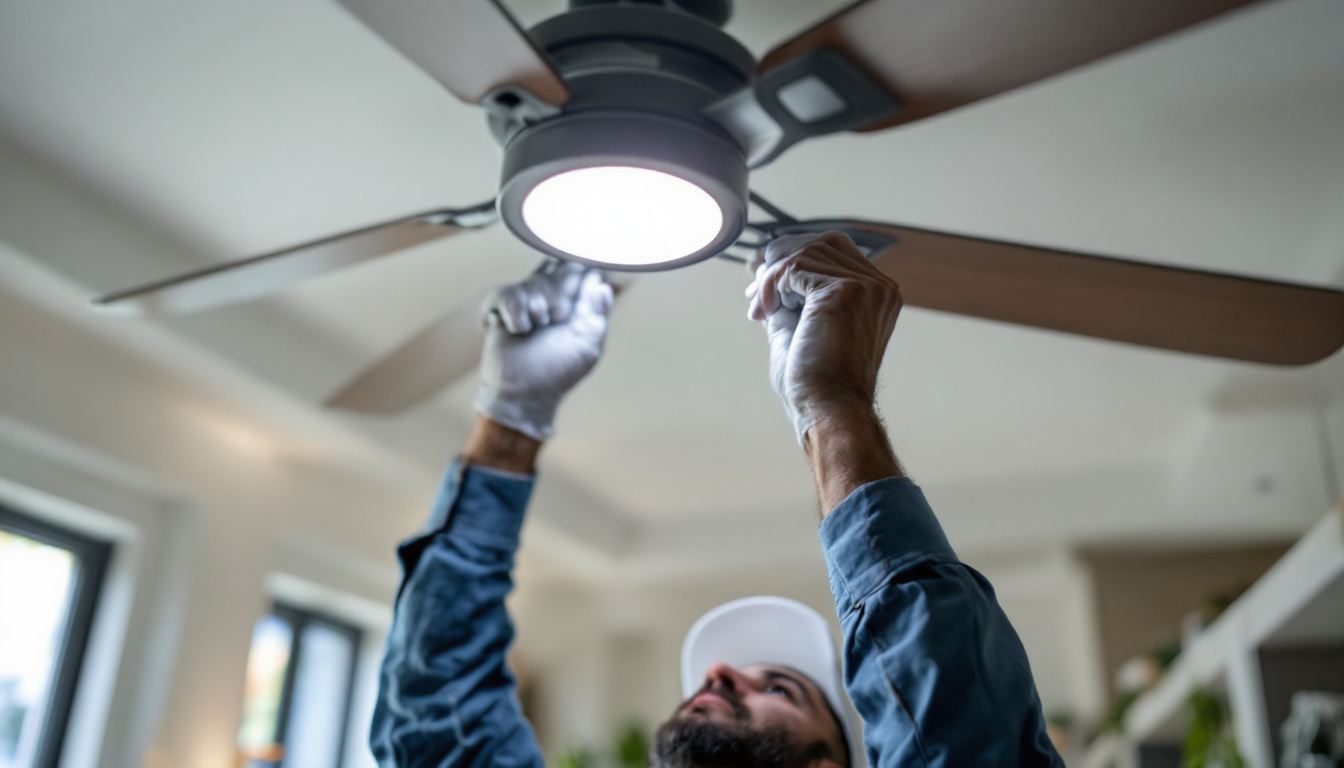
Understanding the intricacies of ceiling fan and light switch installations is crucial for lighting contractors. This knowledge not only enhances the quality of work but also improves customer satisfaction. In this article, we will explore the essential aspects of ceiling fan and light switch configurations, including wiring, functionality, and best practices for installation.
Ceiling fans serve dual purposes: they provide airflow and can also incorporate lighting. The wiring for ceiling fans can be more complex than standard light fixtures due to these dual functionalities. Familiarity with the wiring requirements is essential for any lighting contractor. Proper installation not only enhances the aesthetic appeal of a room but also ensures safety and efficiency, making it crucial for contractors to stay updated on best practices and local codes.
Typically, a ceiling fan requires three wires: a hot wire for the fan, a hot wire for the light, and a neutral wire. In some cases, a ground wire is also necessary. The hot wires are connected to the switch, allowing for individual control of the fan and light. Understanding how to properly connect these wires ensures that the fan and light operate independently or together, depending on the homeowner’s preference. Additionally, the gauge of the wire used can impact performance; for instance, using a heavier gauge wire can reduce voltage drop, which is particularly important in larger spaces where longer runs of wire are necessary.
In addition to the basic wiring, some fans come with remote control options, which may require additional wiring or a special receiver. This is an important consideration for contractors to keep in mind, as it may affect the installation process and the overall functionality of the ceiling fan. Moreover, modern ceiling fans often include smart technology, allowing homeowners to control their fans via smartphone apps or voice commands. This integration of technology not only enhances convenience but also opens up new possibilities for energy efficiency, as many smart fans can adjust their speed based on room temperature or occupancy.
There are various types of switches that can be used with ceiling fans. The most common are single-pole switches, which allow the fan and light to be controlled from one location. However, there are also three-way switches, which enable control from multiple locations, and dimmer switches that allow for adjustable light levels. Each type of switch has its own installation requirements and compatibility considerations, making it essential for contractors to understand the nuances of each option.
When selecting a switch, it is essential to consider the specific needs of the homeowner. For instance, if the fan is installed in a large room, a three-way switch may be beneficial to control the fan from different entry points. Additionally, some homeowners may prefer a pull-chain switch for a more traditional feel, while others may opt for a wall-mounted control for ease of access. Understanding these options helps contractors provide tailored solutions to their clients. Furthermore, educating homeowners about the benefits of each switch type can empower them to make informed decisions that enhance their overall comfort and satisfaction with their ceiling fan installation.
In many installations, the ceiling fan and light are controlled by a single switch. However, there are configurations where separate switches are used. Knowing how to wire these configurations is vital for ensuring optimal functionality.
With a single switch control, both the fan and light are operated from one switch. This is a straightforward installation, often preferred for its simplicity. However, it limits the flexibility of controlling the fan and light independently. Contractors should discuss this option with clients to ensure it meets their needs.
For this configuration, the wiring typically involves connecting both the fan and light to the same hot wire. This means that when the switch is flipped, both the fan and light will turn on or off simultaneously. It’s a practical solution for smaller spaces or areas where independent control is not a priority. Additionally, this configuration can be particularly beneficial in rooms where the ceiling height is lower, as it simplifies the installation process and reduces the number of visible switches on the wall, contributing to a cleaner aesthetic.
For those seeking more control, separate switch configurations allow the fan and light to be operated independently. This setup is particularly useful in larger rooms or spaces where different lighting levels are desired.
In this configuration, two separate switches are installed: one for the fan and another for the light. The wiring involves connecting each hot wire to its respective switch, allowing for independent operation. This setup not only enhances user experience but also allows for energy savings by enabling the homeowner to use the fan without the light, or vice versa. Moreover, this configuration can be particularly advantageous in spaces that serve multiple purposes, such as a living room that doubles as a home theater. By controlling the light and fan separately, users can create the perfect ambiance for movie nights or gatherings, adjusting the lighting to a dimmer setting while keeping the fan running for comfort.
Additionally, separate switch control can accommodate advanced features such as dimmer switches for the light or speed controls for the fan. This level of customization allows homeowners to tailor their environment to their specific preferences, making the space not only more functional but also more enjoyable. As technology continues to evolve, integrating smart home systems with separate switch configurations is becoming increasingly popular, enabling users to control their ceiling fans and lights remotely via smartphone apps or voice commands, further enhancing convenience and energy efficiency.
When installing ceiling fans and light switches, adhering to best practices is essential for safety and functionality. Proper installation techniques can prevent future issues and ensure customer satisfaction.
Before beginning any installation, safety should be the top priority. Always ensure that the power is turned off at the circuit breaker to prevent electrical shocks. Using insulated tools and wearing appropriate personal protective equipment (PPE) can further enhance safety during the installation process.
Additionally, it’s important to follow local building codes and regulations. These codes may dictate specific wiring methods, switch placements, and safety measures that must be adhered to during installation. Familiarizing oneself with these regulations can prevent costly mistakes and ensure compliance. Furthermore, having a clear understanding of the layout of the electrical system in the home can help identify potential hazards and streamline the installation process. This knowledge can also assist in planning the best locations for switches and fans, maximizing both convenience and aesthetic appeal.
After completing the installation, testing the functionality of the ceiling fan and light switch is crucial. This step ensures that everything is wired correctly and operates as intended. Turn the power back on and check both the fan and light independently to confirm that they function properly.
If any issues arise, troubleshooting should be conducted promptly. This may involve checking connections, ensuring that the correct wires are connected to the appropriate switches, or examining the switches themselves for faults. A thorough testing process not only guarantees quality work but also builds trust with clients. Additionally, it’s beneficial to educate clients on the proper use and maintenance of their new installations. Providing them with tips on how to clean the fan blades or change light bulbs safely can enhance their experience and prolong the life of the fixtures. Offering a brief overview of the fan’s features, such as speed settings or remote control options, can also empower clients to make the most of their new installations, ensuring they are satisfied with their investment.
Even with careful installation, common issues can arise with ceiling fans and light switches. Being aware of these problems and knowing how to troubleshoot them can save time and enhance service quality.
One of the most common issues is a ceiling fan that does not operate. This could be due to several factors, including faulty wiring, a blown fuse, or a malfunctioning switch. In such cases, the first step is to check the power supply. Ensure that the circuit breaker is not tripped and that the switch is functioning correctly.
If the power supply is intact, the next step is to inspect the wiring connections. Loose or improperly connected wires can prevent the fan from receiving power. Ensure that all connections are secure and that the wiring matches the intended configuration.
If the ceiling fan operates but the light does not, it may indicate a burned-out bulb or a faulty light fixture. Start by replacing the bulb to see if that resolves the issue. If the bulb replacement does not work, check the wiring connections specific to the light fixture.
Additionally, if using a dimmer switch, ensure that the bulb is compatible with the dimmer. Not all bulbs work with dimmer switches, and using incompatible bulbs can lead to flickering or complete failure of the light.
Understanding the relationship between ceiling fans and light switches is essential for lighting contractors. Knowledge of wiring configurations, switch options, and installation best practices can significantly enhance the quality of work and customer satisfaction.
By familiarizing oneself with common issues and troubleshooting techniques, contractors can provide efficient and effective solutions to their clients. As the demand for ceiling fans and integrated lighting solutions continues to grow, staying informed and skilled in these areas will ensure success in the lighting contracting field.
In summary, whether it’s a simple installation or a complex configuration, the expertise of a lighting contractor plays a crucial role in delivering quality service. By adhering to best practices and maintaining a focus on safety and functionality, contractors can elevate their work and meet the diverse needs of their clients.
Ready to take your lighting projects to the next level? At LumenWholesale, we provide lighting contractors like you with the highest quality, spec-grade lighting products at prices that can’t be beaten. Say goodbye to unnecessary markups and hello to a wide selection of reliable, high-performance lighting essentials that meet the strictest industry standards. With free shipping on bulk orders, you can stock up on everything you need without worrying about hidden fees. Elevate your service offerings and delight your clients with the best value in lighting. Start shopping now and experience the best in wholesale lighting with LumenWholesale.

Discover essential insights into ceiling fan switches that every lighting contractor should know.

Illuminate your outdoor spaces efficiently with our comprehensive guide on the best commercial solar lights.

Discover the essential checklist for lighting contractors seeking affordable strip lights without compromising quality.

Explore the advantages and drawbacks of solar-powered lights for steps, tailored for lighting contractors.